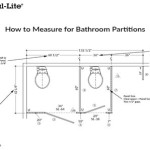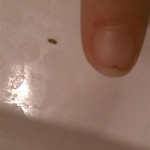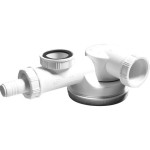Sealing Around a Bathroom Sink: A Comprehensive Guide
Proper sealing around a bathroom sink is crucial for maintaining a clean, functional, and damage-free bathroom. The sealant acts as a barrier, preventing water from seeping behind the sink, into walls, and under flooring. This water ingress can lead to mold growth, structural damage, and costly repairs. This article provides a detailed examination of the importance of sealant, the types of sealant best suited for bathroom sinks, the necessary tools and materials, and a step-by-step guide to applying sealant effectively.
Furthermore, understanding the nuances of surface preparation, application techniques, and curing times is paramount for achieving a durable and watertight seal. This guide also addresses common issues that may arise during the sealing process and offers solutions to ensure a professional and long-lasting result. Neglecting to properly seal around a bathroom sink can lead to various problems that can compromise the integrity of the surrounding structures.
The Importance of a Watertight Seal
A watertight seal around a bathroom sink serves several critical functions. Primarily, it prevents water from penetrating behind the sink and into the adjacent wall. This is particularly important because bathroom walls are often constructed with materials susceptible to water damage, such as drywall or plywood. Prolonged exposure to moisture can weaken these materials, leading to structural instability. Water infiltration can also compromise the integrity of the cabinet or vanity beneath the sink, causing warping, swelling, and premature deterioration.
Beyond structural concerns, moisture intrusion creates a breeding ground for mold and mildew. These microorganisms thrive in damp, dark environments and can pose significant health risks. Mold spores can trigger allergic reactions, respiratory problems, and other health issues. Eliminating the source of moisture through proper sealing is a proactive measure to prevent mold growth and maintain a healthy indoor environment.
Furthermore, a well-executed seal enhances the aesthetic appeal of the bathroom. A clean, consistent bead of sealant provides a finished look, concealing any gaps or imperfections between the sink and the countertop. This attention to detail contributes to the overall cleanliness and visual harmony of the space. A deteriorating or poorly applied sealant line detracts from the appearance of the bathroom and can make the sink area appear neglected.
Finally, proper sealing can help prevent water damage to flooring. Water that seeps behind the sink can eventually migrate to the floor, causing staining, warping, and potential damage to the subfloor. This is especially problematic in bathrooms with laminate or hardwood flooring, which are particularly susceptible to water damage. Therefore, a watertight seal protects the investment in the bathroom's finishes and prevents costly repairs down the line.
Selecting the Right Sealant: Types and Applications
Choosing the appropriate sealant is critical for achieving a durable and effective seal around a bathroom sink. Several types of sealant are available, each with its unique properties and applications. The most common choices include silicone, acrylic latex, and polyurethane sealants. Understanding the characteristics of each type helps in selecting the best option for a specific project.
Silicone sealant is known for its excellent water resistance, flexibility, and durability. It is highly resistant to mold and mildew growth and can withstand extreme temperature fluctuations. Silicone sealant is ideal for areas that are frequently exposed to water, such as around the sink basin, faucet, and drain. However, silicone can be challenging to paint over, so it is essential to choose a color that matches the surrounding surfaces.
Acrylic latex sealant is another popular choice for bathroom applications. It is easier to apply and clean up than silicone sealant and can be painted over, making it a versatile option for matching the sealant to the bathroom's decor. Acrylic latex sealant offers good adhesion to various surfaces and provides a flexible seal. However, it is not as water-resistant as silicone sealant and may be more prone to mold and mildew growth in high-moisture environments. Acrylic latex sealant infused with silicone offers improved water resistance.
Polyurethane sealant provides exceptional durability and adhesion, making it suitable for demanding applications. It offers excellent resistance to chemicals, UV exposure, and abrasion. However, polyurethane sealant can be more difficult to apply than silicone or acrylic latex sealant and may require specialized tools. Its strong adhesion makes it suitable for areas that experience movement or vibration. Consider ventilation as polyurethane sealants tend to have strong fumes.
When choosing a sealant, consider the specific requirements of the project, including the type of surface to be sealed, the level of water exposure, and the desired aesthetic. Read the product labels carefully and follow the manufacturer's instructions for optimal performance. Selecting a sealant specifically formulated for bathroom applications is crucial for long-lasting results.
Step-by-Step Guide to Sealing Around a Bathroom Sink
Applying sealant around a bathroom sink requires careful preparation and meticulous execution. Following a step-by-step guide ensures a professional-looking and watertight seal. The process involves gathering the necessary tools and materials, preparing the surfaces, applying the sealant, and finishing the bead.
Begin by assembling the required tools and materials. These include the chosen sealant, a sealant gun, a utility knife or scraper, a caulk smoothing tool or fingertip, painter's tape, denatured alcohol or mineral spirits, and clean rags. Ensure that the sealant is fresh and within its expiration date for optimal performance.
Next, thoroughly clean and dry the surfaces to be sealed. Remove any existing sealant, dirt, debris, or mildew with a utility knife or scraper. Use denatured alcohol or mineral spirits to remove any residual oils or contaminants. Allow the surfaces to dry completely before proceeding. Proper surface preparation is crucial for ensuring good adhesion of the sealant.
Apply painter's tape along both sides of the area to be sealed, creating a clean and defined line. The tape should be positioned approximately 1/8 inch away from the edge of the sink and countertop. This will help create a neat and uniform sealant bead. Ensure the tape is firmly adhered to the surfaces to prevent sealant from seeping underneath.
Load the sealant cartridge into the sealant gun and cut the tip of the nozzle at a 45-degree angle. The size of the opening should be slightly smaller than the desired width of the sealant bead. Practice applying the sealant on a piece of scrap material to get a feel for the flow and consistency.
Apply a continuous and even bead of sealant along the joint between the sink and the countertop. Maintain a consistent pressure on the sealant gun and move smoothly along the joint. Avoid applying too much sealant at once, as this can create a messy or uneven bead. Overlapping the beginning and ending of the bead will help ensure a continuous seal.
Immediately after applying the sealant, use a caulk smoothing tool or a moistened fingertip to smooth the sealant bead. Apply gentle pressure and move along the bead in a smooth, continuous motion. This will create a professional-looking finish and ensure that the sealant is properly bonded to the surfaces. Wipe off any excess sealant from the smoothing tool or fingertip with a clean rag.
Carefully remove the painter's tape while the sealant is still wet. Pull the tape away from the sealant at a 45-degree angle. This will create a clean and crisp edge along the sealant bead. If any sealant seeps underneath the tape, use a utility knife or scraper to remove it immediately.
Allow the sealant to cure according to the manufacturer's instructions. The curing time can vary depending on the type of sealant and the environmental conditions. Avoid exposing the sealant to water or moisture during the curing process. Once the sealant is fully cured, it will provide a durable and watertight seal.
Inspect the completed seal for any gaps or imperfections. If necessary, apply additional sealant to fill any voids or areas that require further sealing. Regularly inspect the sealant around the bathroom sink and reapply as needed to maintain a watertight seal and prevent water damage.
Sealing around a bathroom sink is a manageable task if conducted with diligence and the right approach. A functional and aesthetically pleasing bathroom will be ensured when done appropriately.
How To Seal A Sink Eys

How To Seal A Sink Eys

Installing A New Bathroom Sink

How To Re Caulk A Sink

Home Dzine Diy How To Seal Around Bath Tub Or Basin

How To Seal A Ceramic Bathroom Sink Eys Malaysia Home Improvement S
How To Re Caulk A Bathroom Sink Ifixit Repair Guide

Rubber Seal Sink Pop Up Plug Replacement Drain For Basket Stoppers 12 36 Pic Au

Black Bathroom Strainer Wash Basin Leaking Plug Insect Proof Seal Filter Hair Blocked Home Essential Temu

Seal Your Bathroom Vanity With Woodoc
Related Posts







